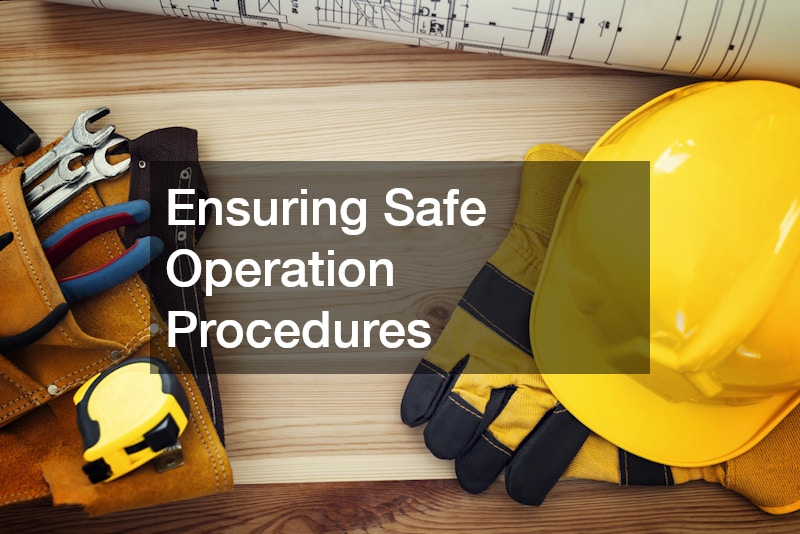
Material handling equipment plays a crucial role in various industries, facilitating the movement, protection, storage, and control of materials throughout different stages of production, distribution, and disposal. From factories to warehouses, the reliance on such equipment is immense, underscoring the importance of adhering to safety protocols. Understanding the types of material handling equipment, such as conveyors, cranes, forklifts, and pallet jacks, is fundamental to ensuring safe operations.
Each type of equipment has distinct functions and operational protocols that must be comprehended by operators. For instance, forklifts are instrumental in lifting and transporting heavy loads, but come with inherent risks if not used properly. Familiarizing workers with the various components and operational guidelines of each piece of equipment minimizes the risk of accidents and improves workflow efficiency.
Furthermore, proper training in the use of material handling equipment ensures that all employees are knowledgeable about the equipment’s capabilities and limitations. This comprehensive understanding is vital as improper handling can lead to costly damages, operational downtime, and injuries. Companies must prioritize regular training sessions and safety drills to cultivate a safe working environment.
Ensuring Safe Operation Procedures

Implementing proper safety protocols is essential to mitigate risks associated with material handling equipment. A key aspect of safe operations is conducting regular equipment inspections and maintenance. Regular checks ensure that all components are in optimal condition, reducing the likelihood of equipment malfunctions that could result in accidents.
Another critical aspect of safety involves ensuring that operators adhere to the equipment’s load limits. Overloading can lead to equipment failure, posing serious hazards to both the operators and surrounding workers. Instructions regarding weight limits, proper load balancing, and coordinates for safe navigation should be enforced strictly to avoid mishaps.
Moreover, clear communication among team members is vital for safe operations. Establishing clear signals and protocols for maneuvering equipment ensures that all team members are aware of the movements and can maintain a safe distance. This collaborative approach not only enhances safety but also boosts efficiency in handling tasks.
Utilizing Protective Measures
Personal protective equipment (PPE) serves as the first line of defense against potential accidents when operating material handling equipment. Helmets, gloves, and safety boots are essential to protect workers from potential injuries. Employers need to enforce compliance with PPE usage to ensure workplace safety.
In addition to PPE, the work environment must be structured to support safe operations. This includes marking safety zones, clearly identifying pedestrian pathways, and ensuring adequate lighting throughout the workspace. Such measures not only physically protect workers but also psychologically instill a safety-conscious mindset.
Furthermore, advanced technological solutions can enhance safety measures. For example, using sensors and automated alerts can help in preventing collisions and managing traffic within busy environments. Integrating such innovations within material handling operations positions companies at the forefront of a safety-conscious approach, ensuring enhanced protection of the workforce and assets.
Optimizing Workflow Efficiency
Beyond safety, material handling equipment plays a pivotal role in streamlining operations and boosting overall efficiency. Properly planned equipment layouts and workflow designs can significantly reduce unnecessary movement, saving time and resources. For example, strategically positioning conveyors, forklifts, and pallet jacks within a warehouse can minimize the distance workers need to travel, accelerating the handling process.
Integrating technology also contributes to operational efficiency. Warehouse management systems (WMS) and real-time tracking software can coordinate the movement of goods, optimize equipment usage, and provide insights into potential bottlenecks. Additionally, regular evaluation of workflow patterns helps identify underutilized equipment or areas where process improvements can be made.
Training employees to use equipment efficiently complements these measures. Skilled operators can perform tasks faster while maintaining safety standards, leading to higher productivity. Encouraging feedback from staff on workflow challenges also provides valuable insights for refining operations.
By focusing on efficiency alongside safety, companies can achieve a balance where material handling equipment not only protects employees and assets but also maximizes operational output. Streamlined processes, smart layout planning, and proper training create a cohesive system that supports growth and sustainability.
Maintaining Equipment Longevity
Proper maintenance of material handling equipment is crucial not only for safety but also for extending the lifespan of assets and reducing operational costs. Routine inspections, timely repairs, and adherence to manufacturer guidelines help prevent unexpected breakdowns that could disrupt workflow. For instance, regularly lubricating moving parts, checking hydraulic systems, and replacing worn components keep equipment running smoothly and reliably.
Preventive maintenance programs are highly effective in detecting potential issues before they escalate into costly problems. Scheduling regular servicing ensures that forklifts, conveyors, cranes, and other equipment remain in optimal condition, reducing downtime and avoiding expensive emergency repairs.
Investing in the maintenance and care of material handling equipment ultimately benefits both the workforce and the organization. Well-maintained machinery operates more efficiently, lowers repair costs, and supports a safer, more productive working environment, creating long-term value for the business.
Prioritizing safety in material handling equipment operations is not only a regulatory requirement but a moral obligation to protect the workforce and the organization’s assets. By understanding the equipment, implementing stringent operational protocols, and leveraging protective measures, companies can mitigate risks associated with material handling activities. Emphasizing safety also fosters a culture of accountability and efficiency within the workplace, ultimately contributing to a successful and sustainable business.





